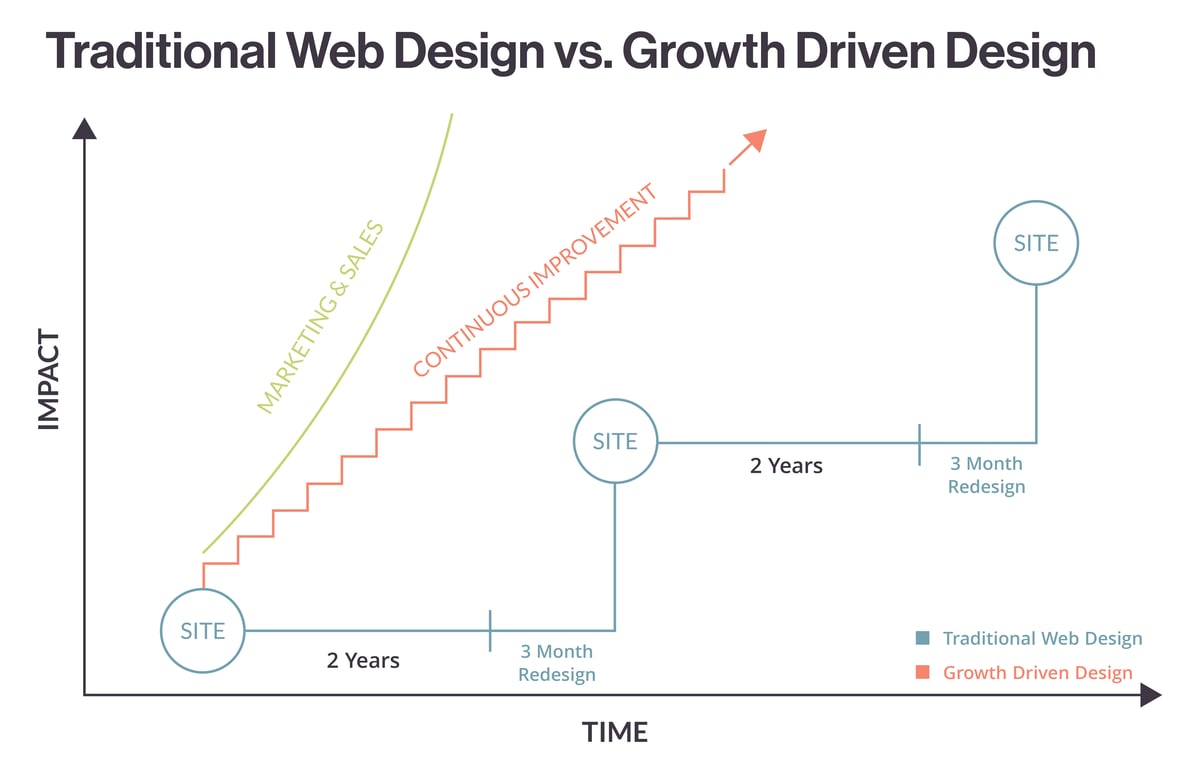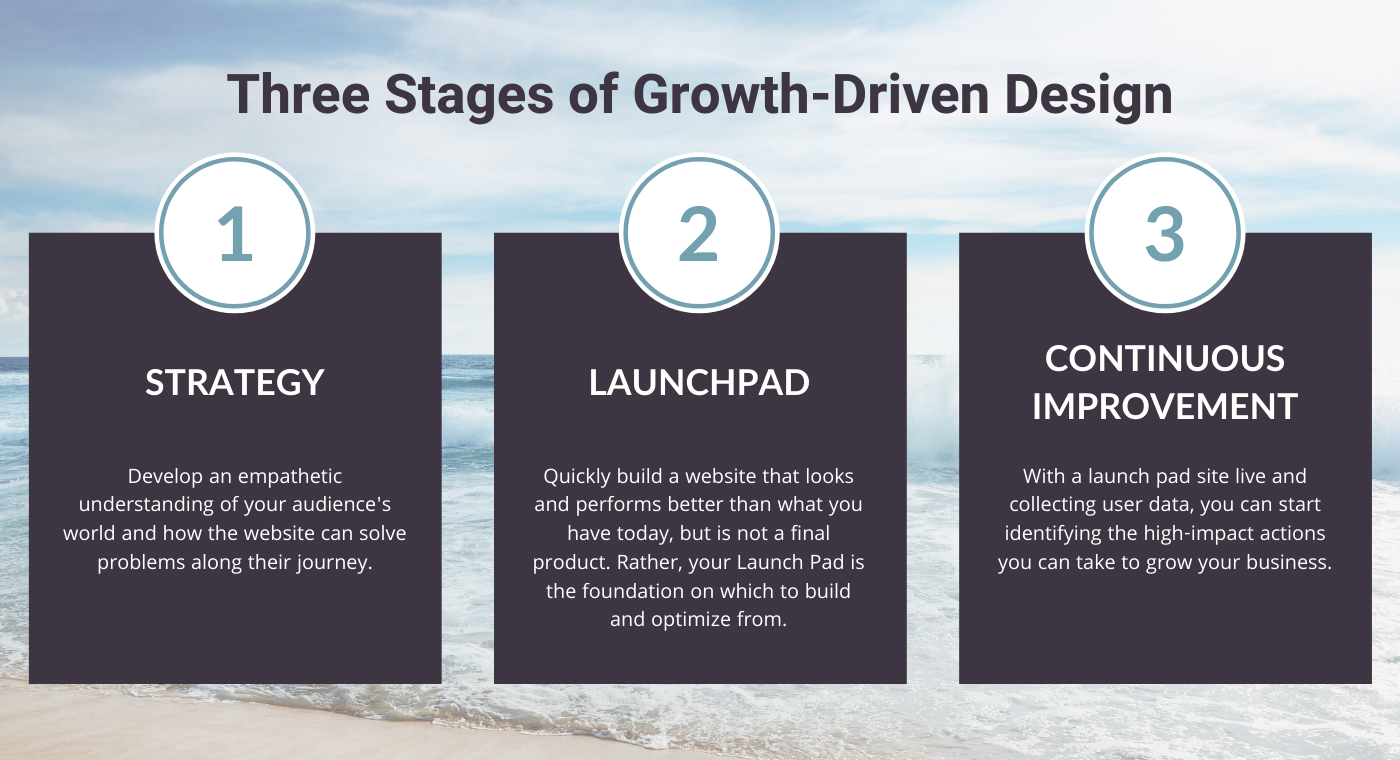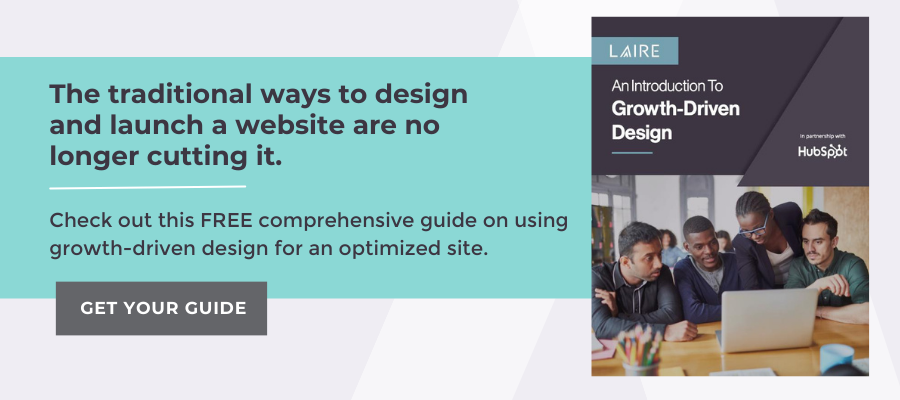Your website is the best marketing tool in your arsenal, and when designed well, it can be your best lead-generating machine. That’s because it’s your most efficient salesperson, available to your potential customers twenty-four hours a day. Which makes it all the more important to make a solid first impression, as it will be the first place people will learn about your company.
In fact, 88% of consumers say they are less likely to return to a site after a bad experience. Most companies don’t understand the value and potential in digital marketing their website can provide, or just don’t wish to put in the effort to take on the long and costly task of redesigning a website to be as effective as possible.

This hesitance is not without reason, website redesign is expensive, stressful, and can be a large time commitment. A website redesign can take up to 3-6 months, and that time will accumulate costs.The average website redesign can cost anywhere from $12,000 to $150,000.
After all that, your new site may not actually perform any better than your current one. Often these projects can go over budget and scope, and rarely do they launch on time. Talk about missing the mark on ROI.
Thankfully, there is a way to reduce stress and minimize cost. Enter Growth-Driven Website Design, the smarter approach to web design.
What is Growth-Driven Design (GDD)?
Growth-Driven Design is an agile and data-driven method for redesigning your website and improving your marketing results. It takes the traditional website redesign process and approaches it in a smarter way to mitigate the risks and problems that typically occur.
This method also takes advantage of something that is rarely a part of traditional website development: data. Websites created using the Growth-Driven Design approach are much more in tune with your prospective buyer and drive more and better leads for your sales team.
Growth-Driven Design Methodology
The Growth-Driven Design strategy focuses on launching quickly and making continuous improvements in stages. Your website should never be stagnant. With a traditional website project, a lot of upfront effort goes into creating the design, copy, page flow, etc. Often, once a website is built in this way, it’s a long time before a company revisits it to make any changes.
When creating a site using the Growth-Driven Design Methodology, the site is continuously optimized and updated based on user data and real results. This provides a better user experience and pathway to becoming a customer.
Growth-Driven Web Design vs. Traditional Website Design
Traditional web design is an unnecessary risk for your business. These projects take a long time to launch, have a large upfront cost, and usually go over the original budget and timeline because of unforeseen scope changes and back and forth delays. When the project wraps up, often companies will pat themselves on the back for a job well done, but the truth is, it is uncertain how much ROI you will get from a traditional website project.
Even worse, there often exists a complacency, a “leave it as is” mentality that leads to all your effort and work to be for nothing. Leaving your company with a website that has undergone minimal change and with lackluster improvements, at an enormous cost. Essentially, buying paint to fix a house's structure.
Traditional website design can be detrimental to your business growth for many reasons:
- The design was not based on data - What stakeholders want does not mean what professional designers would recommend.
- It may not provide a great user experience - what seems like a cool feature or UI may actually be frustrating and cause visitors to leave and seek out a competitor.
- There is difficulty in discovering leads - your site may, unintentionally, make it more difficult for your team to uncover potential prospects and convert visitors to leads.
How to Redesign Websites a Better Way
With Growth-Driven Design, these risks are mitigated, and in some cases eliminated entirely. While they do take time, a GDD site has a much faster time-to-value because it uses a launchpad website design that can be created quickly. The launchpad improves your website user experience immediately without the typical 6 months plus wait time that comes with a traditional project.
While it is nowhere near a final product, the launchpad gives your team the ability to implement features and conversion points based on user data. In fact, 51% of companies say updating old content has proven the most efficient tactic implemented to grow their business.
Because Growth-Driven website projects are data-driven rather than based on internal assumptions (which are often wrong), they allow your site to be optimized over time to provide a better experience for your audience, improve your customer journey, and increase your sales pipeline.
Additionally, with a GDD website the cost of the project is spread out over time so you don’t have to worry about a large upfront investment that won’t bring returned value for months (if ever). Not only will your site become a lead generation engine, with Growth-Driven Design you can actually determine the ROI of your website.

How does Growth-Driven Design work?
The Three Stages of Growth-Driven Design
There are three major stages in the Growth-Driven Design methodology. The strategy phase, launchpad creation, and continuous improvement.

The Strategy Phase
Because your website is meant to inform and connect with your audience and create traffic to generate qualified leads for your sales team, the strategy phase is incredibly important. The goal of the strategy phase is to understand your audience and determine how your website can help solve their problems. This will help you create a website that captures more leads.
During this phase, you’ll need to think about your ideal customer and their challenges and goals. How can your website be made easier to help them find what they are looking for?
You should also conduct user experience (UX) research to ensure you have a good understanding of how to create the ideal journey for your audience (not just one that your employees think might be good). In the “Jobs to Be Done” step, you’ll identify what pain points and needs your audience has and what drives them to choose your company’s products and services as their solution.
The next step is to create buyer personas (a fictional representation of your ideal customer). Instead of relying on what you think consumers want, you will interview and use data generated by your users to form an ideal person you are trying to reach. With this, you should understand what your consumers' problems are, what makes them unique, and why your website can solve their problems.
This process helps inform how your website can directly address these challenges. You may think you have a great understanding of your prospective customer, but you may be surprised by what you can learn from them.
Now that you have gained an insight into your consumers, you can now apply this information through the creation of a buyer’s journey - The before, during, and after someone interacts with your business.
You’ll need to define your business goals and KPIs for the website. These goals should be SMART goals (specific, measurable, attainable, relevant, and timely) so that you can accurately measure the ROI attributed to your website. Using all of this data, you can create a website design that is beneficial to your ideal consumers who actually use your website. Once you have a plan to target your ideal audience, next you’ll need to focus on strategy for specific website elements. This includes your site's architecture, on-site SEO (Search Engine Optimization), important pages and sections, branding, site integrations, and more.
To round out the strategy phase of Growth-Driven Design, you will brainstorm a website wish list. Think of ideas that you could implement that could provide value and help your business goals. Include features, modules, integrations, design elements, sections, pages, and more.
Launchpad Website Design
The second stage of the Growth-Driven Design strategy is to create a launchpad website. While this stage is often the most confusing for many clients, due to the difference in standard website design, it’s still an important step. Based on data, your team will alleviate the stress and worry that comes from a website redesign.
Unlike traditional web design, with GDD the goal is to build a website quickly that looks and performs better than your current site but is not considered a final product. The launchpad is the foundation on which your new site will expand in the continuous optimization phase. By setting up a launchpad site quickly, you can test and collect data from real people interacting with the site without sacrificing a lot of time and money.
You can use the data collected to help in implementing future design decisions. Because you can quickly improve and build upon your current site using a launchpad, the time-to-value is much faster than in a traditional six-month+ website build.
There is not a "connect the dot" solution to this process because your website will be unique to any other website. However, working with professional designers, such as the ones in an established HubSpot partner agency, can help alleviate your concern. With experience judgment, they can accurately determine the best course of action for your website.
Continuous Improvement
After you’ve determined your strategy and created your launchpad site, the third stage of Growth-Driven Design is continuous improvement. This is the biggest difference between GDD and traditional website design. Instead of leaving your website as is, and hope for the best, you begin to identify high-impact changes that will grow your leads and revenue based on actual user data.
While that sounds easy enough, as with any website project, it may be difficult to stay focused on the areas of highest impact. The best way to stay on track is to use the simple agile process:

Plan
Outline the course of actions that will lead to the greatest impact on your current goals using a website performance road map. This is the most challenging part because there will always be many items you could work on, so staying focused on the data is key.
Build
In a focused sprint, create the highest priority items from the website performance roadmap. Make sure to include experiments to test these items for their effectiveness.
Learn
Step back and review the various experiments that you are running on the launchpad site. Use your research and incorporate what you find into future website updates. This is the most important step in the continuous improvement process because it allows you to gain a deeper understanding of your audience and how to meet their needs and your business goals.
Transfer
The last step is to transfer the knowledge gained from your experiments to the wider business. The insights from your website can be critical in helping inform the entire company and can be used to improve other areas of your business outside of just the website. In this way, your website can not only be a lead generation engine, but also an information-gathering tool.
Benefits of Growth-Driven Design
Growth-Driven Design is a much more effective and impactful way to build a new website than traditional website design, for many reasons.
Use a Smarter Approach
- Launch quickly and continuously improve
- Spread your investment over time + ROI which you can measure
- Build your new website on time and on-budget
Improve User Experience
- Use data to make changes based on real user interactions
- Increase traffic and reduce bounce rate
- Increase your brand’s trustworthiness
Boost Conversions and Optimize Results
- Add and optimize conversion points
- Test value propositions and messaging
- Improve month-over-month
- A/B test variables
Provide Lasting Business Value
- Increase sales opportunities and customer interactions
- Gain insights that can provide future business value
Results Driven Web Design
Traditional website design processes produce poor results. The traditional method of creating and designing websites may produce a beautiful site, but they are often created with a narrow view of your customers and based on many (often inaccurate) assumptions on building a successful online presence.
Growth-driven design allows the website design process to be guided by your actual site visitors and potential customers. It is a smarter approach to creating websites that reduces the risk and frustration that follow traditional website projects.
Growth-Driven Marketing
Not only does Growth-Driven Design produce better website results because you are always improving the performance of your site, but it also improves the performance of your entire company. A GDD website provides invaluable learning opportunities about your site visitors and potential customers that can be shared across the company. These insights can be used to improve marketing campaigns, sales conversations, customer service, and even drive new product development.
Ready to start your new website design?
Think back to your current website. Is it performing optimally? Do you know that it is succeeding on its ROI? Has it even changed in the past few years? Companies that use Growth-Driven Design rather than traditional website design see a faster time-to-value and better lead generation while launching their new website in nearly half the time.
LAIRE is an agile growth-driven website design agency based that works remotely to supply the best talent in the country. We use the GDD methodology to create great results and help our clients attain continuous improvement of their websites. If you’re ready to get started on a new website that will quickly bring value to your marketing and sales teams, reach out and connect with us for a Growth-Driven Design proposal.


